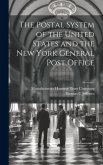Explore the historical landscape of postal services with the "Post Office Guide" by Jersey City (N.J.). This guide offers a snapshot of early postal operations, likely providing insights into mail handling, delivery routes, postal regulations, and perhaps even rates and services available during that era. A valuable resource for historians, philatelists, and those interested in the evolution of communication networks, this guide provides a look into the workings of a local post office and its role in connecting communities. Discover the detailed processes and regulations that governed mail service, offering a glimpse into a bygone era of communication. This work has been selected by scholars as being culturally important, and is part of the knowledge base of civilization as we know it. This work was reproduced from the original artifact, and remains as true to the original work as possible. Therefore, you will see the original copyright references, library stamps (as most of these works have been housed in our most important libraries around the world), and other notations in the work. This work is in the public domain in the United States of America, and possibly other nations. Within the United States, you may freely copy and distribute this work, as no entity (individual or corporate) has a copyright on the body of the work. As a reproduction of a historical artifact, this work may contain missing or blurred pages, poor pictures, errant marks, etc. Scholars believe, and we concur, that this work is important enough to be preserved, reproduced, and made generally available to the public. We appreciate your support of the preservation process, and thank you for being an important part of keeping this knowledge alive and relevant.
Bitte wählen Sie Ihr Anliegen aus.
Rechnungen
Retourenschein anfordern
Bestellstatus
Storno








